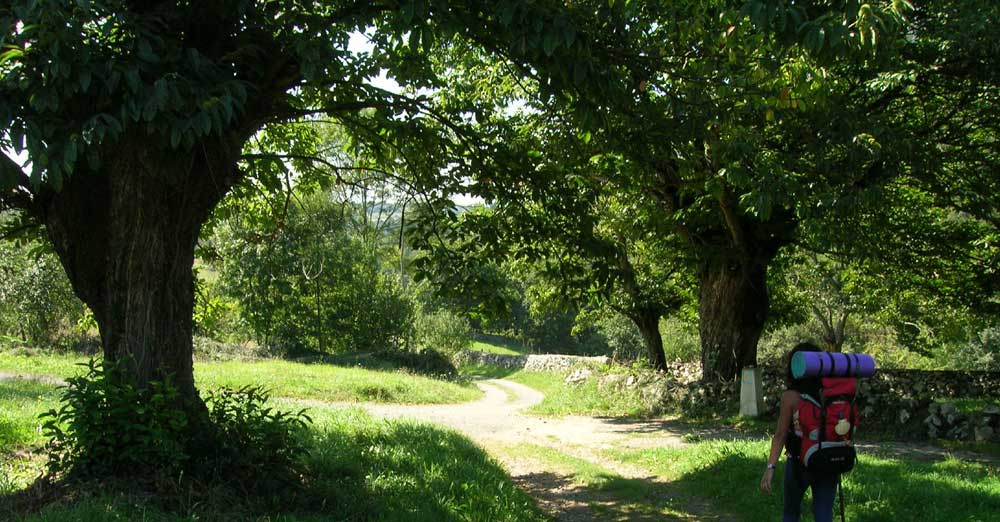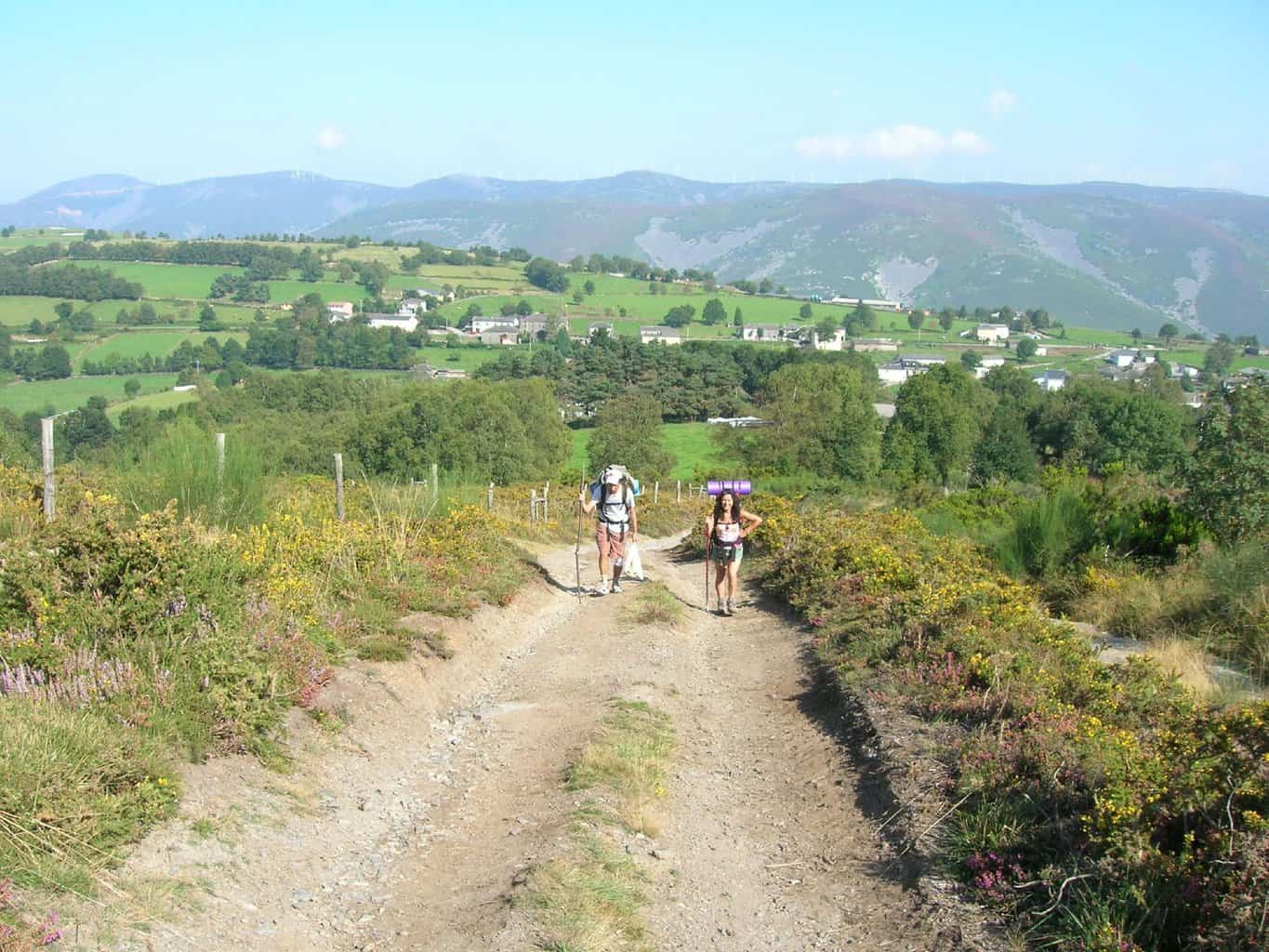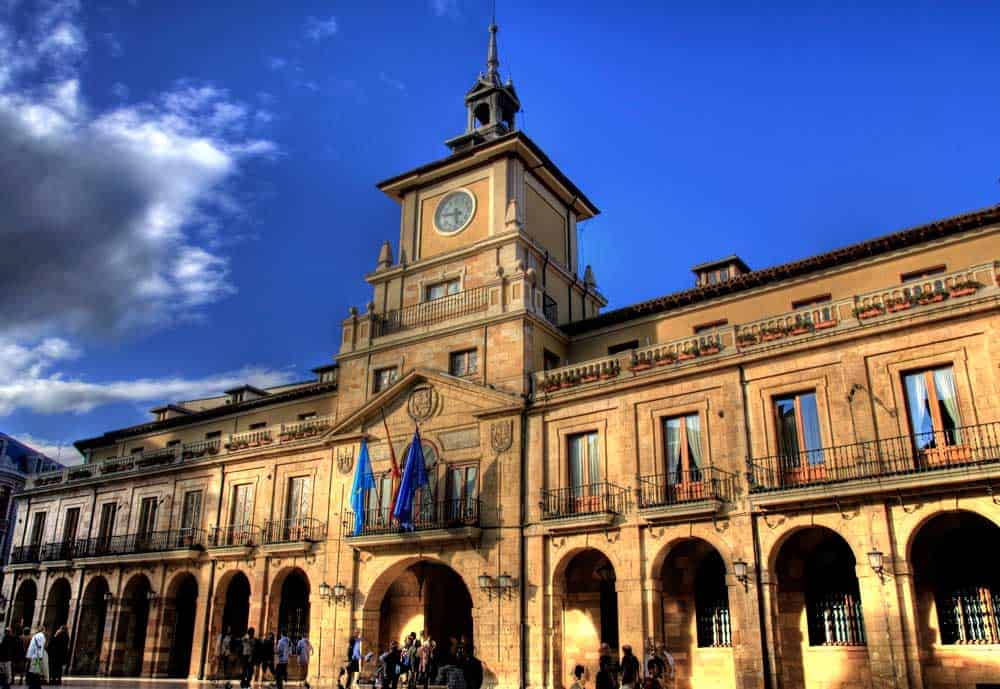The Camino Primitivo route was the first Camino de Santiago pilgrimage route to the city of Santiago de Compostela. This is why it is referred to as the Original Way. The Spanish King Alfonso II of Asturias created this route to visit the newly discovered tomb of the Apostle Santiago in the 9th century, Saint James to you and me.
Only while Oviedo was the capital of the Spanish kingdom, it was the main pilgrim hub and the main Camino route to Santiago. All roads lead to Oviedo and only one road led then to Santiago de Compostela. Once the capital of Spain was transferred to Leon the Camino Frances became the preferred route.
Devout early pilgrims walked to Oviedo along the Camino Real to visit the Cathedral of Oviedo San Salvador. Many would continue to Santiago de Compostela via the coast along the Camino del Norte. It has also been argued that pilgrims traveled to Oviedo as the Camino Real was an easier route being an extension of the Via de la Plata which follows an ancient Roman road.
Ensuring that pilgrims continued to Oviedo a saying developed “Whoever goes to Santiago and not to San Salvador, visits the servant but not the lord”. This is an example of how important politically and financially the Camino de Santiago was to Oviedo. While the Asturian king was consolidating the road, he brought trade and nobles to the city and formed allegiances in the fight against the Moors.
The Camino Primitivo starts in Oviedo and winds through central Asturias and Galicia, and although originally not that famous, it has become increasingly more popular over the past few years. Nonetheless, the experience has little to do with the overcrowded Camino Francés as well as the overwhelming solitude of the other routes.
Overview of the Camino Primitivo

The following is a typical day-by-day itinerary if you are walking the entire route, but you can make the journey longer or shorter to suit your own available time. Cycling will usually take half the time.
- Oviedo to San Juan de Villapanada 27 km/16.7 miles
- San Juan de Villapanada to Salas 18.2 km/11.3 miles
- Salas to Tineo 19.8 km/12.3 miles
- Tineo to Pola de Allande 26.4 km/16.4 miles
- Pola de Allande to La Mesa 21.6km.13.4 miles
- La Mesa to Grandas de Salime 15.3km/9.5 miles
- Grandas de Salime to A Fonsagrada 25.2 km/17.2 miles
- A Fonsagrada to O Cadavo 24.3km/15.5miles
- O Cadavo to Lugo 29.5km/19 miles
- Lugo to San Romao 19.6 km/12/2 miles
- San Romao to Melide 28.3 km/17.5 miles
- Melide to Arzua 14 km/8.7 miles (you are now walking the Camino Frances)
- Arzua to Pedrouzo 19.3km/12 miles
- Pedrouzo to Santiagio de Compostela 19.4km/12 miles
The huge advantage of Camino Primitivo is the fact that it almost always stays away from asphalted roads allowing the pilgrims to sink in the natural beauties. Plus, there are numerous sources of drinkable water every few kilometers, so it is not really necessary to carry a lot of water on you.
Terrain
One of the most known features of this route is its challenging terrain, a bit like the long distance walking routes in Scotland. The section from Oviedo, all the way to Lugo, is typical for its mountainous character. The route is a continuous series of ups and downs composed of forest trails, dirt roads, stone or lose-rock paths, and very occasional asphalt roads. The descent to the Salome reservoir and the ascent to Puerto del Palo are the two most significant level differences of the way and might be too hard to tackle in one go for some. Therefore, at least some prior physical preparation is advised to undertake Camino Primitivo.
How Long is the Camino Primitivo?
The Camino Primitivo is about 320 km, (200 miles). But, bear in mind this is a hilly route and will take longer. Most pilgrims will be able to walk the whole route in 14 days.
Waymarking on the Primitivo
The waymarking is excellent all along the route, mostly composed of concrete milestones with the shell symbol indicating the direction. You will also come across painted yellow arrows or ceramic tiles on local houses from time to time.
Beware, that at the very start, in Oviedo, the signage is made with bronze scallop shells incorporated into the ground. While they are quite lovely, following them requires a lot of attention as they are not visible from a distance and, at times, maybe covered by a car.
One of the most curious facts about waymarking on the Camino Primitivo is the direction of the shell, which changes upon entering Galicia. In Asturias, the shell works as an imaginary arrow with the narrower part “pointing” in the right direction along the Camino de Santiago. However, in Galicia, it is the other way around, the wider (opening) part of the shell point toward Santiago.
Cities & Distances
From Oviedo to Melide, the Camino Primitivo Way stretches over 261 km and passes through 36 towns with available services. Thus, on average, there is a town or village with services every 7.3 km. The settlements are pretty evenly distributed along the route. However, there are some sections without services you might want to keep in mind:
- From Pola de Allende to Lago (13.2 km), a mountain route including the ascent to Puerto del Palo.
- From La Mesa to Grandas de Salime (15.2 km), with no towns in between;
- From Castroverde to Lugo (22.2 km). Even though you will cross a series of small villages, there are no stores or bars, only a few vending machines offering food and drink.
- From San Roman da Retorta to Melide (30.2 km), you will cross a few tiny villages with grocery stores but with unpredictable opening hours. There is a tiny bar 4 km before Melide.
The two largest cities on Camino Primitivo are Oviedo, with over 200 thousand inhabitants, and Lugo, with almost 100 thousand inhabitants. The third-largest town is Tineo, with 11 thousand inhabitants.
When is the Best Time to Hike the Camino Primitivo?
Due to its rainy climate, the weather can be damp and colder even in summer. As in all high-located regions, the weather is very changeable. Whether you experience many days flooded in sunshine or will be forced to shuffle through mud and rain is a matter of luck. To minimize your chances of miserable weather, you should opt for the summer months of June, July, and August, read the best time to walk the Camino for more information.
Accommodation
The Camino Primitivo route has a relatively good network of albergues distributed along the road in comfortable intervals allowing you to stay in pilgrim-only accommodation almost at all times. In general, the albergues are in good condition. Also, you might come across albergues located in villages without services, so always check and plan ahead, so you do not find yourself without dinner.
I am not going to duplicate someone else’s work. The Wise Pilgrim has the absolute best and up-to-date list of private albergues, pensions, hostels, and hotels for the Camino Primitivo. They also have a great app that you can use while traveling in Spain along all the Camino routes.
What Are the Best Sights to See?
Besides the breathtaking mountainous sceneries, there are more than enough historical jewels on the Camino Primitivo. In Oviedo, do not miss the famous cathedral Cámara Santa as well as the three churches from the pre-Romanesque period on the outskirts of the city: San Julián de Los Prados, San Miguel de Lillo, and Santa Maria del Naranco. Monastery ruins in Cornellana and Obona are also worth a visit.
What are the Best Guide Books for the Camino Primitivo?
There are two good Camino Primitivo guidebooks written by the same author, whichever you buy is dependent on the information you need for other routes as both cover more than one route. The Northern Caminos (The Caminos Norte, Primitivo, and Inglés) and Camino del Norte and Camino Primitivo both books are written by Dave Whitson and Laura Perazzoli, and published by Cicerone Press. The guides are exceptionally detailed and what is most important, up-to-date. Besides information on the routes, terrain, and accommodation, they include colored maps, an overview of historical monuments along the way, advice on gear as well as a vocabulary of basic Spanish words and expressions.
Read the packing list page for a full list of gear.
Travel Along The Route
You can look for the relevant bus, train, or flight connection at goeuro.com, a platform, which provides a timetable, and price information about multiple companies including ALSA and RENFE
Why Hike the Camino Primitivo?
If you yearn to get away from the hustle and bustle of civilization and find your refuge in nature surrounded by stunning sceneries, the Camino Primitivo is the right choice for you. Contrary to some of the other routes, it is neither too overcrowded nor too lonely. However, its mountainous terrain with numerous ups and downs requires a healthy physique. Thus, if you are inexperienced or have trouble with your knees, you might want to choose another route or undergo suitable preparation.

I love hiking, backpacking, and camping. From the Camino de Santiago to the West Highland Way in Scotland or simply a great day hike on the weekend. Hiking refreshes me, my mind, and keeps my body reasonably fit. So far I have walked three Camino routes and many other long distance hikes in the UK, Canada, and around the rest of Europe. One of the best was my hike up Ben Nevis.



